Surgery for AV Fistula: The Lifeline of a Haemodialysis Patient
06 August 2019
An arteriovenous fistula (AVF) is a vital component for haemodialysis patients, and in this blog post, we will discuss the surgery for AV fistula and its importance for those undergoing dialysis.
What is an arteriovenous fistula?
An arteriovenous fistula (AV) fistula or dialysis access is a site which is constructed to obtain easy access to the blood circulation; it is situated just under the skin and is not exposed. The access site is usually on the arms and rarely on the thighs. This access enables blood to be withdrawn and re-infused safely, quickly and efficiently during dialysis.
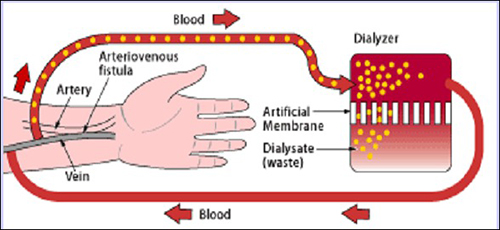
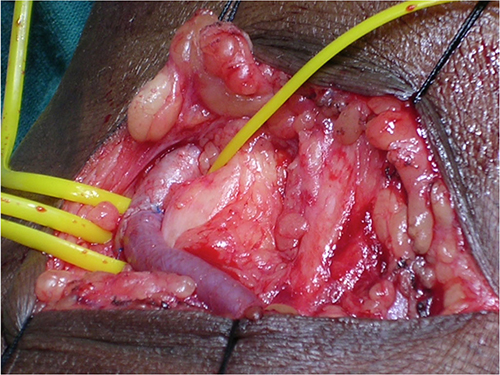
What is haemodialysis?
Haemodialysis is a one of the methods for the treatment of kidney failure. The dialysis machine is a replacement of the kidney that is specifically designed to remove waste material in the blood stream. During dialysis, a portion of the blood will be removed and also to balance the chemicals in the blood, then the dialysed or ‘cleaned’ blood is then returned to the body via this blood pressure and organ perfusion.
Types of permanent access
The creation of the dialysis access requires surgery to be performed.
There are two types of access:
- Fistula: This is a direct communication between the vein and the artery by linking them together.
- Graft: a prosthetic tube is implanted into the patient, which will connect the vein and the artery.
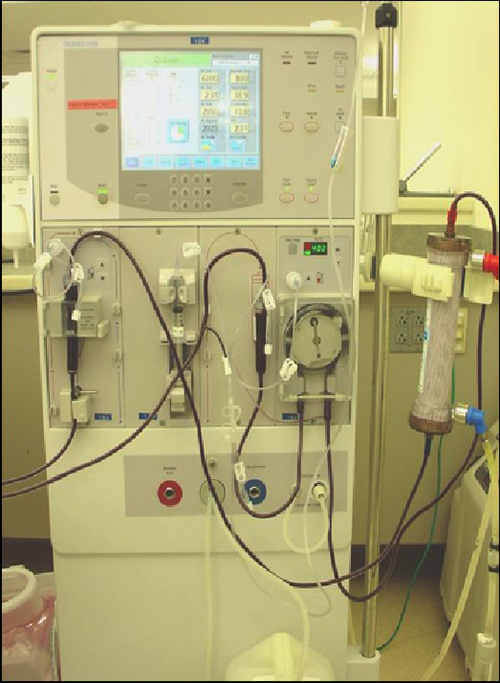
Fistula (AVF)
After surgery, the blood flow in the vein or fistula will increase, which will eventually increase the diameter of the vein and the thickness of the vein wall; the increase in blood flow in the vein is necessary for the maturation of the fistula. The time for maturation ranges from 3 weeks to 3 months. In the event that the fistula fails to mature, additional procedure may be required like balloon fistulopasty or creation of a new fistula. When the fistula is mature, a large calibre needle can be used to puncture the vein for dialysis.
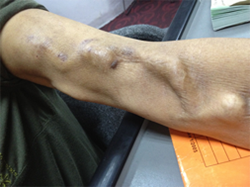
Graft (AVG)
A graft is placed under the skin and it bridges the artery and the vein. Once the graft is inserted, it does not require time for maturation and it can be used after 2 week when the swelling has subsided. A graft is an alternative method for haemodialysis treatment in patients with veins that are too small for fistula creation. The disadvantage of a graft is that its lifespan is shorter than a fistula and there is a higher rate of infections.
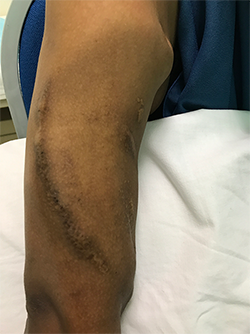
What happens before surgery?
Before the surgery for AV fistula, patients undergo a thorough examination and assessment to determine the best course of action for their dialysis access.
Before the access site is selected, the surgeon will enquire on symptoms of blood vessel diseases. This is because diseased vessels will impede the blood flow, thus causing the fistula not to mature or failing completely. Enquiries will also be made of other medical conditions, such as: diabetes, mellitus, hypertension and heart failure which will affect the fistula. In addition, the ingestion of certain blood thinners (medications) needs to be informed to the doctor as well, because it may cause excessive bleeding if not stopped prior to the surgery. Lastly, an ultrasound will be performed to evaluate the artery and the vein and to select the best vessels for surgery.
What is the surgical procedure that will be performed?
The procedures are usually carried out as a day ward admission unless it is done under general anaesthesia - most of the procedures are done under local anaesthesia. The non-dominant arm is usually the preferred site of fistula. For an example if a person is right-handed, the fistula is done on the left arm.
In general, the vein that is divided is sewn on to an opening made in the artery; this in effect will cause the blood flow to be split. Usually, the blood flows in the artery to supply the arm but with a fistula, some of the flow will be into the vein.
In the event there is an absence of a suitable vein, a prosthetic graft will be inserted. One end of the graft will be connected to the vein while the other to the artery.
Will you be suitable for a dialysis access procedure?
If a person has kidney damage and requires long-term haemodialysis, a dialysis access is required. The access is best created before the haemodialysis procedure, as it will take 6 to 8 weeks to be matured and to be useable. However, an access procedure may not be possible if the veins are too small or diseased due to previous punctures. A fistula is also not possible if the artery is occluded. In addition, a graft will not be inserted in the presence of any infections; this is due to the possibility of the infection to spread to the graft.
What is expected after a dialysis access procedure?
After undergoing the surgery for AV fistula, it would be advisable to keep the hands slightly elevated to reduce the swelling, Pain killers need to be taken to reduce the pain after surgery. The wound care post-surgery includes the following:
- Ensure the wound is dry for at least 3 days.
- Avoid lifting objects exceeding 8kgs
- Avoid compression of the arm.
- If there is excessive pain, swelling or bleeding,, please consult your doctor as soon as possible.
During post-surgery, the hand may feel slightly cold; this is a symptom which will usually be alleviated after a few weeks once the blood circulation stabilises. If this symptom persists or worsens, please see your doctor, as this could be due to excessive blood flow into the fistula or inadequate blood supply to the arm; This is known as a ‘steal’ syndrome and needs to be addressed early.
Exercise can be done to hasten the maturation of the fistula. The repeated squeezing of a soft object like a ball will increase the blood flow through the fistula.
What are the complications?
The complications include:
- Narrowing of the vein
- Formation of blood clots in the vein
- Swelling or aneurysm of fistula
- Wound infection
- Bleeding.
What is the long term care of a dialysis access?
The care of a dialysis access cannot be emphasised enough as it is the life line of a renal failure patient. The following are the care which you should be aware of:
- Regular examination of the fistula to ensure it is still functioning. You will feel a buzzing feeling called a thrill which should be felt on the vein.
- Ensure there is minimal bleeding after dialysis. If the bleeding is excessive or it takes longer than usual to stop, please inform the dialysis staff.
- Do not sleep on the arm with the fistula.
- No tight clothing or jewellery which could occlude the fistula flow.
- No heavy objects should be carried on the hand of the fistula.
- No blood taking or blood pressure should be taken on the hand with the fistula.
- Injections or drug infusions should be avoided on the arm with the fistula.
- The site of the fistula or graft should be kept clean at all times.
- After dialysis, please ensure that there are no signs of infection like redness or swelling. If it occurs, please see a doctor immediately.
- Do not apply any cream or lotion on the puncture sites.






